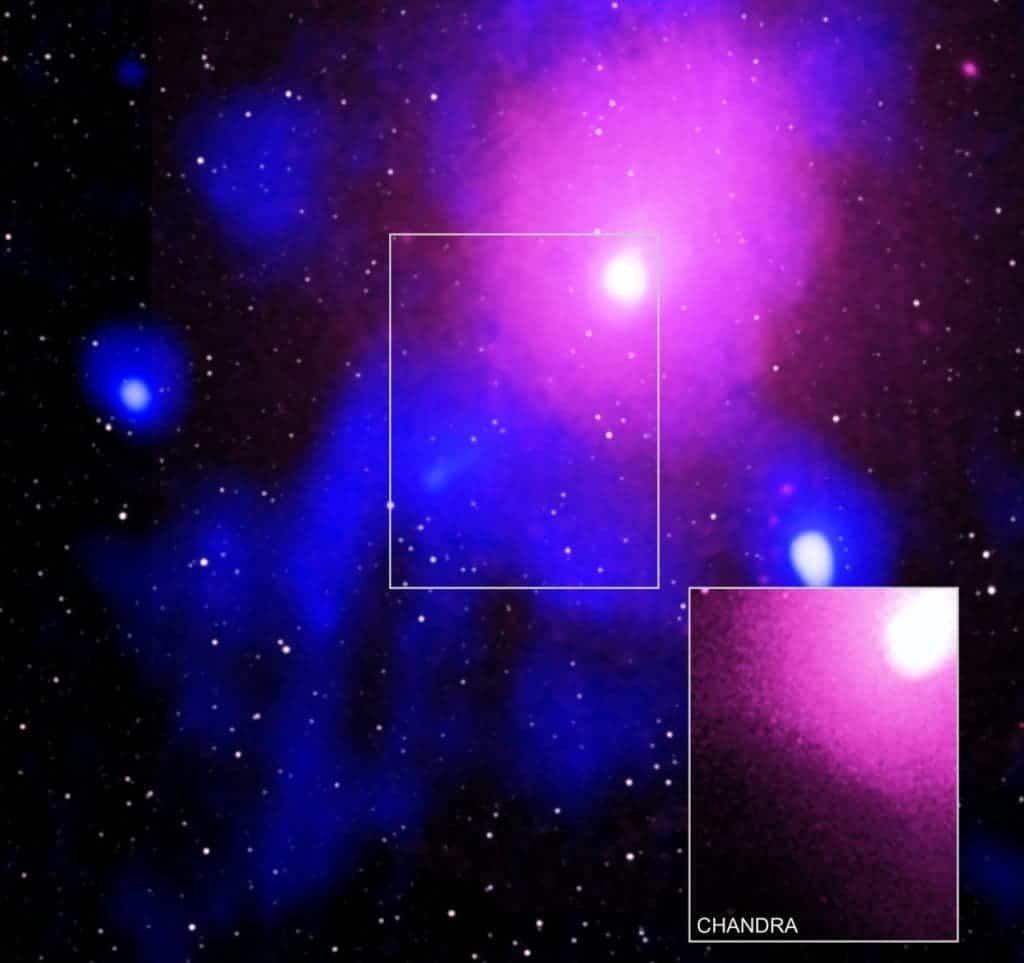
Ever want to make a literal dent in space? Apparently a supermassive black hole in the Ophiuchus galaxy cluster did when it erupted and caused the largest known explosion since the Big Bang. The black hole punched a dent the size of 15 Milky Ways in the surrounding space.
Galaxy clusters like Ophiuchus are some of the largest objects in the universe and contain thousands of individual galaxies, dark matter, and hot gas. At the heart of the Ophiuchus cluster is a giant galaxy that contains a black hole with a mass equivalent to around 10 million suns.
Professor Melanie Johnston-Hollitt, from the Curtin University node of the International Centre for Radio Astronomy Research, said the event was extraordinarily energetic. “We’ve seen outbursts in the centres of galaxies before but this one is really, really massive,” she said. “And we don’t know why it’s so big.”
The explosion — captured using four telescopes; NASA’s Chandra X-ray Observatory, ESA’s XMM-Newton, the Murchison Widefield Array (MWA) in Western Australia and the Giant Metrewave Radio Telescope (GMRT) in India — occurred 390 million light-years from Earth. It was so powerful that it punched a cavity in the cluster plasma, the super-hot gas surrounding the black hole. The find was made with Phase 1 of the MWA, when the telescope had 2048 antennas pointed towards the sky.
Scientists dismiss the idea that it could be caused by an energetic outburst, as it was too large. The explosion was initially recorded by the Chandra Observatory in 2016, however, the results were dismissed as astronomers believed a cavity of that magnitude was impossible.
Lead author of the study Dr. Simona Giacintucci, from the Naval Research Laboratory in the United States, said the blast was similar to the 1980 eruption of Mount St. Helens, which ripped the top off the mountain. “The difference is that you could fit 15 Milky Way galaxies in a row into the crater this eruption punched into the cluster’s hot gas,” she said.
Professor Johnston-Hollitt, who is the director of the MWA and an expert in galaxy clusters, says that this finding underscores the importance of studying the universe at different wavelengths. She also likened the finding to discovering the first dinosaur bones.
“It’s a bit like archaeology,” she says. “We’ve been given the tools to dig deeper with low frequency radio telescopes so we should be able to find more outbursts like this now….We’re soon going to be gathering (MWA) observations with 4096 antennas, which should be ten times more sensitive. I think that’s pretty exciting.”
The study was published in The Astrophysical Journal.


